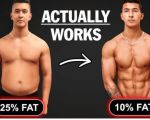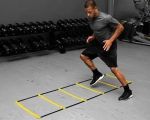Fitness Recovery Tips After Intense Sessions: Essential Strategies
After an intense workout, your body is exhausted, and the muscles you’ve worked hard to build or strengthen are in need of proper care. I know firsthand how difficult it can be to push through a tough training session, but I also learned that proper recovery is just as important as the workout itself. As I started taking my recovery seriously, I noticed significant improvements in my performance, energy levels, and overall well-being. Whether you're a seasoned athlete or just starting your fitness journey, the importance of recovery cannot be overstated. In this article, I’ll share the fitness recovery tips that have worked for me and how you can use them to speed up your recovery and feel your best after every workout.
1. Understanding the Importance of Recovery
When I first started training, I didn’t pay much attention to recovery, thinking that the harder I pushed, the faster I would see results. However, I quickly learned that this wasn’t the case. Overworking my muscles without proper recovery led to fatigue, soreness, and even injuries. Recovery, I discovered, is essential for muscle repair, growth, and overall performance enhancement. It allows the body to replenish glycogen stores, repair muscle fibers, and remove metabolic waste products.
Understanding the role of recovery helped me realize that taking time to rest and properly care for my body after intense sessions is just as critical as the workout itself. Without recovery, muscles can become overworked, leading to diminished returns on your effort and an increased risk of injury. Whether you’re lifting weights, doing cardio, or training for endurance, recovery helps you come back stronger and more prepared for the next session.
2. The Power of Hydration
One of the most important lessons I’ve learned about recovery is how crucial hydration is. I used to think of water solely as something to drink before and during a workout, but after intense sessions, hydration becomes a vital part of the recovery process. Your body loses water through sweat, and this dehydration can hinder your ability to recover. Staying hydrated helps transport nutrients to your muscles and tissues, speeds up the removal of waste products, and maintains electrolyte balance.
For optimal recovery, I recommend drinking water during and after your workout, along with consuming drinks that contain electrolytes. When I started adding coconut water or sports drinks to my post-workout routine, I noticed that I didn’t feel as drained, and my muscles recovered faster. Hydrating after exercise also prevents muscle cramps and can reduce soreness in the days following a tough workout. Remember, hydration doesn’t end when your workout does – keep drinking water throughout the day to maintain recovery.
3. Proper Nutrition: Fueling Your Recovery
Nutrition plays an essential role in how well your body recovers. When I began to focus on refueling my body properly after workouts, I felt a noticeable difference in my energy levels and muscle recovery. After an intense session, your muscles are depleted of glycogen and are in need of both protein and carbohydrates to repair and rebuild.
For protein, I’ve found that consuming a post-workout shake with whey protein helps support muscle repair. Protein is crucial for repairing the small tears that occur in muscle fibers during intense workouts. Carbohydrates, on the other hand, help replenish glycogen stores, which are your body’s primary energy source during exercise. I like to combine protein with carbohydrates—such as a banana or oats—right after my workout to maximize my recovery.
Additionally, healthy fats like those found in avocado, nuts, and olive oil help reduce inflammation and support overall muscle repair. Eating a balanced meal within 30-60 minutes after a workout has been a game-changer for me. It ensures that my muscles get the nutrients they need to recover and rebuild stronger.
4. Active Recovery and Stretching
While rest is crucial, I also discovered that active recovery can speed up the healing process. Active recovery involves low-intensity exercise such as walking, swimming, or cycling that helps increase blood flow to the muscles and enhances recovery without putting strain on them. I started incorporating light yoga or a brisk walk into my recovery days, and it made a big difference in reducing muscle stiffness and keeping my body flexible.
Stretching is another essential component of recovery. I used to neglect stretching after my workouts, but now, I make it a priority. Stretching helps improve flexibility, reduce muscle tightness, and promote better circulation. I focus on dynamic stretches before my workouts and static stretches after my sessions to help cool down my muscles and improve range of motion. Stretching also decreases the risk of injury by keeping muscles flexible and limber.
5. Sleep: The Ultimate Recovery Tool
When I first started focusing on recovery, I didn’t fully appreciate the power of sleep. I used to think that as long as I was eating right and hydrating, I could get by with minimal sleep. However, I quickly learned that sleep is one of the most important factors in recovery. During sleep, your body enters a restorative phase where muscle repair and growth occur. Growth hormone, which is responsible for muscle repair, is released during deep sleep, making rest essential for improving strength and endurance.
I now prioritize getting 7-9 hours of quality sleep each night to allow my body to fully recover from intense workouts. It’s also helpful to create a bedtime routine that promotes restful sleep, such as avoiding caffeine late in the day, turning off screens before bed, and creating a calm environment. When I consistently get enough sleep, I wake up feeling refreshed and ready for my next workout.
6. Incorporating Recovery Tools
Over time, I’ve also started to incorporate different recovery tools into my routine to help speed up the healing process. Some tools that have been especially helpful for me include foam rollers, massage guns, and ice packs. Foam rolling helps to release tight muscles and fascia, increasing blood flow to promote faster recovery. I also use a massage gun on areas that tend to get tight, like my shoulders and quads, which has helped reduce soreness and improve flexibility.
Cold therapy, such as ice baths or cold packs, is another effective tool for reducing inflammation and speeding up muscle recovery. After intense leg workouts, I find that a cold bath helps soothe the muscles and reduce swelling. Some people also find that contrast baths (alternating between hot and cold water) are highly effective in promoting recovery.
7. When to Rest and Listen to Your Body
Perhaps one of the most important lessons I’ve learned is the value of rest. While it’s tempting to push through soreness and keep working hard, I’ve found that listening to my body is the key to avoiding overtraining and injury. Rest days are essential for muscle recovery and ensuring that your body has time to repair itself properly. I’ve learned to take a day or two off after particularly intense workouts, especially when my body feels fatigued or sore.
It’s also important to recognize the signs of overtraining, such as persistent fatigue, irritability, and soreness that doesn’t go away. If I ever feel like I’m pushing myself too hard, I know it’s time to back off and allow for more recovery. Resting when needed has helped me avoid burnout and kept me consistently progressing without injury.
8. Final Thoughts on Fitness Recovery
Fitness recovery is an integral part of any training regimen. Without proper recovery, all the hard work you put into your workouts can be wasted. By staying hydrated, fueling your body with the right nutrition, incorporating active recovery, getting enough sleep, and using recovery tools, you can speed up the healing process and come back stronger for your next session. I’ve found that balancing hard work with proper recovery has made a world of difference in my fitness journey.
If you’re looking for expert advice or services to optimize your recovery, I highly recommend checking out Fitness for the best resources tailored to your needs. Recovery isn’t just a luxury—it’s a necessity for achieving long-term fitness success.








